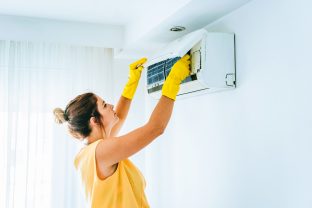Many householders are looking to transition off gas to more sustainable renewable energy sources to reduce carbon monoxide risks, reduce the homes greenhouse gas emissions and provide flexibility on energy source for key appliances.
Transitioning off gas has several benefits, it provides choice of fuel, removes a gas connection and supply charges, and provides safer internal environments for occupants. As you know, gas appliances can only be used with gas, whereas electric appliances can have energy sourced from onsite renewables, green power from the grid, batteries, or brown/black coal fired electricity.
The primary appliances in a home that use gas are heating, hot water and cooktops. These are all major appliances and units typically have a lifespan of 15 years or longer and would not ‘need’ to be replaced until they fail, unless you choose to do that for other reasons (ie environmental concerns and wanting to get off gas).
Here are the most common alternative electric options for consideration in your journey to remove gas from your home.
Ducted gas heating – any of the following would be good options (listed in best efficiency order)
- Upgrade to high efficiency multi head reverse cycle units and remove ducting. This provides maximum efficiency and flexibility of control for heating and cooling. OR
- Install a high efficiency inverter reverse cycle unit connected to existing ducting (and get ducting checked for leaks and insulated if needed/possible). While multi head units offer more flexibility and control of each space, if you prefer leaving the doors to zones in the home open, an efficient ducted unit would also work, but is not as efficient as multi head units.
- Heat pump hydronic heating (and cooling) is also available now in Australia if you prefer that option and have family members with respiratory issues.
Gas space heating – upgrade to high efficiency reverse cycle unit.
Gas Cooktop – switch to an induction cooktop. These take some getting used to but are significantly safer in the home, cost less to run and are very easy to clean.
Gas hot water – currently only efficient electric option is a heat pump HWS unit but the capital cost can be high from $1,700 (Midea brand) upwards to over $7,000. Refer information on hot water for details on what to look for in heat pumps. Alternatively if hot water needs are low (ie one bathroom or tap) consider an electric instant unit like the Microheat unit (highly efficient and low standby.
Disconnecting from the Gas Network – this is the last step (get the champers ready!). Disconnection can cost anywhere from $69 per home in Victoria up to $1500 in NSW. Check with your gas distributor to find out what it will cost you in your area.
If you’d like to know more or book an assessment for your home, just contact us here.








